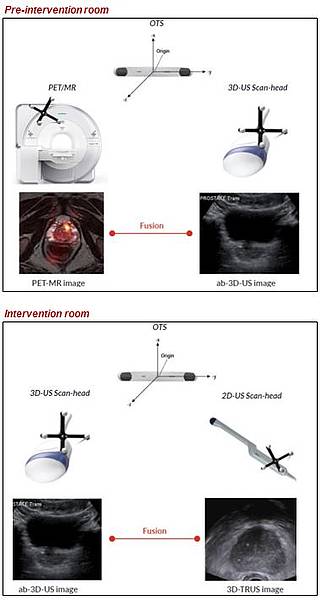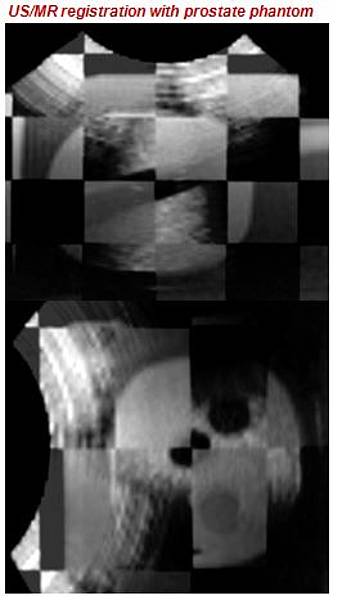3D Ultra sound guided navigation system featuring hybrid image fusion with functional images in real time
Image fusion, registration and navigation

Multi-modal image registration aims to spatially align medical images from different imaging modalities into the same coordinate space. Image fusion through registration can integrate complementary information from multi-modal imagesto help achieving more accurate diagnosis and treatment. This is useful in minimally or non-invasive procedures such asimage-guided surgery, guided radiotherapy planning and image-guided biopsy where diagnostic information from pre-operativeimages (Computed tomography (CT), Magnetic resonance (MR) or Positron-emission tomography (PET)) are fused withintra-procedural imaging (e.g. ultrasound (US)).

The idea of this project was to develop a real-time navigation system which allows for image fusion between two arbitrary image modalities by replacing the (commonly used) inter-modal registration by an intra-modal 3D-US/3D-US registration and the use of an optical tracking system (OTS). This should avoid well know difficulties arising from inter-modal registration. Such challenges are described for a large variety of modalities. For example, in multi-modality image-guided prostate biopsies, the registration between MR and transrectal-US (TRUS) images is difficult due to the poor signal to noise ratio and lack of well-defined features in US images and the inhomogeneous imaging resolutions. Therefore, the registration is commonly performed using surface-based methods, utilizing image segmentation to address the appearance difference between the two modalities.
